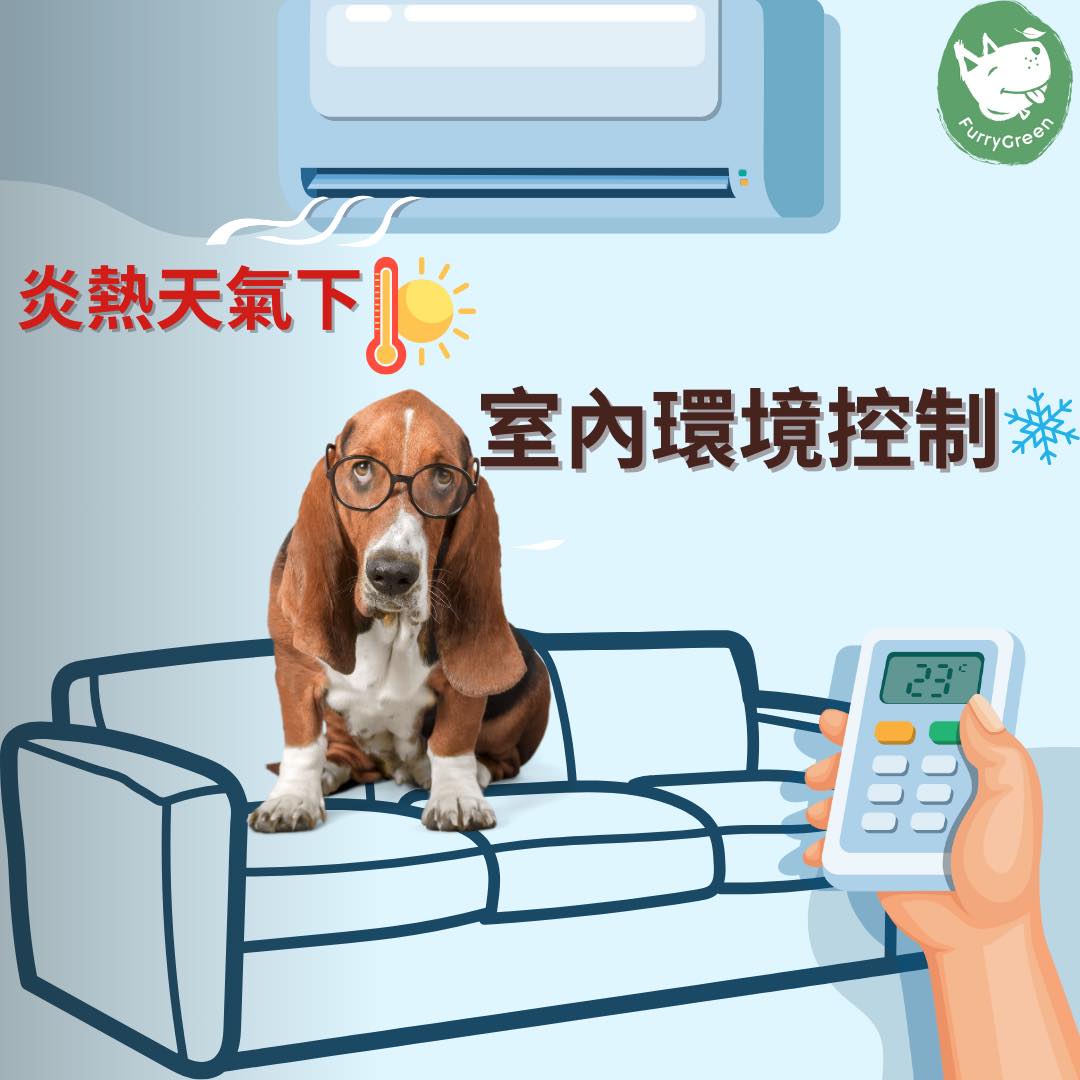
Keeping Your Dog Comfortable Indoors During Hong Kong's Hot, Humid Summers
Share
Beat the Heat: An Indoor Summer Survival Guide for Hong Kong Dogs

The Unique Challenge of Summer in Hong Kong
Hong Kong summers are notoriously hot and humid, with temperatures frequently above 33°C and humidity often exceeding 80%. For dogs, this combination is more than uncomfortable—it can be dangerous. Unlike humans, dogs cannot sweat efficiently; they rely mainly on panting, which becomes far less effective in humid air.
In compact Hong Kong apartments, where natural cooling options are limited, keeping dogs safe and comfortable requires planning. This guide provides practical strategies for managing temperature, hydration, nutrition, and daily activities, helping your pet stay healthy through even the hottest months.
Understanding Your Dog’s Heat Tolerance
Dogs experience heat differently from humans. Their limited cooling mechanisms make them especially vulnerable during Hong Kong’s humid summers.

How Dogs Cool Down
- Panting: This is their primary cooling method, but it's much less effective when the air is saturated with moisture.
- Sweat Glands: Found only in their paw pads, these have a minimal impact on overall body temperature.
Ideal Indoor Conditions
- Temperature: Aim for 25–28°C.
- Humidity: Keep it between 50–60%. When humidity exceeds 70%, dogs struggle to cool themselves effectively.
Pro Tip
Place a thermometer and hygrometer at your dog’s height (near floor level) for an accurate reading of the environment they actually experience.
Which Dogs Are More Heat-Sensitive?
Some dogs are at a much higher risk in Hong Kong’s climate:
- Brachycephalic (Short-Nosed) Breeds: Bulldogs, Pugs, and French Bulldogs have shortened airways that make panting less efficient.
- Double-Coated Northern Breeds: Huskies and Malamutes have dense coats that trap heat.
- Giant Breeds: Saint Bernards and Great Danes generate and retain more heat.
- Puppies, Seniors, and Overweight Dogs: These groups have less efficient temperature regulation.
- Dogs with Health Conditions: Heart or respiratory diseases are worsened by heat stress.
Creating Indoor Cool Zones
Air conditioning is often essential but should be used strategically to create a safe haven in your apartment.
Optimizing Your Space
- AC Temperature: Set it to 25–27°C. Aim vents upward or away, not directly at your dog. Use the dehumidify function to maintain 50-60% humidity.
- Cooling Mats: Gel cooling mats provide direct relief. It's a good idea to have two to rotate while one recharges.
- Elevated Beds: Mesh beds allow for 360-degree airflow, preventing heat from getting trapped underneath your dog.
- Natural Cool Spots: Encourage your dog to rest on tile floors in the kitchen or bathroom.
- Block the Sun: Use blackout curtains on sun-facing windows to significantly reduce indoor temperatures.
Hydration & Nutritional Needs
Proper hydration and nutrition are critical for managing summer stress.
Hydration Strategies
- Multiple Water Stations: Place fresh water bowls in several rooms to encourage drinking.
- Pet Fountains: Many dogs are attracted to moving, filtered water and will drink more from a fountain.
- Hydrating Foods: Add moisture-rich foods like wet food, gently cooked meals, or even just a splash of water to their kibble.
- Frozen Treats: Offer ice cubes made from diluted, low-sodium chicken broth or frozen chunks of dog-safe fruits like watermelon.
Signs of Dehydration
Watch for dry or tacky gums, skin that doesn’t spring back when gently lifted (skin turgor test), sunken eyes, and lethargy. If you suspect dehydration, contact a vet immediately.
Managing Daily Activities
Adjusting your dog's routine is key to avoiding heat-related risks.
Walks & Outdoor Time
- Timing is Everything: Restrict walks to the coolest parts of the day: early mornings (before 7:30 AM) and late evenings (after 7:30 PM).
- The 7-Second Pavement Test: Place the back of your hand on the pavement. If you can't hold it there for 7 seconds, it's too hot for your dog's paws.
- Indoor Alternatives: On dangerously hot days, skip the walk. Visit a pet-friendly indoor mall or focus on indoor enrichment instead.
Indoor Enrichment
Keep your dog mentally stimulated without overheating:
- Puzzle Feeders & Snuffle Mats: These make mealtime a fun challenge that engages their brain.
- Lick Mats: Spread dog-safe peanut butter or yogurt on a lick mat and freeze it for a long-lasting, calming activity.
- Short Training Sessions: Practice commands like "stay," "touch," or "find it" to burn mental energy.
Recognizing Heat-Related Emergencies
Knowing the signs of heat stress can save your dog's life.
Signs of Heatstroke
- Early Signs: Excessive panting, thick drool, bright red gums, and restlessness.
- Advanced Signs: Weakness or stumbling, vomiting, diarrhea, confusion, or collapse.
Emergency Response Checklist
- Move your dog to an air-conditioned space immediately.
- Apply cool (not ice-cold) water to their paws, groin, and belly. Use a fan to aid evaporation.
- Offer small sips of cool water if they are alert. Do not force them to drink.
- Transport to a vet urgently. Heatstroke is a medical emergency that requires professional care, even if your dog seems to be improving.
Preparing for Extreme Weather
Typhoon season (June–October):
- Power outage prep: battery-operated fans, non-refrigerated cooling mats, designate the coolest room.
- Indoor potty options: pee pads, washable grass patches.
- Emergency kit:
- 72-hour water supply (1 L per 10 kg per day)
- Cooling mats/fans
- Medications if needed
- Absorbent pads
“Hot nights” (temperatures >28 °C overnight):
- Use AC timers to keep sleeping areas comfortable.
- Provide cooling mats or elevated beds.
- Consider remote monitors that send alerts if indoor temperature rises.
Smart Technology Solutions
Hong Kong’s tech-forward lifestyle offers modern ways to keep pets comfortable:
- Smart AC controls: adjust remotely, set custom temperature/humidity profiles.
- Environmental monitors: track temperature, humidity, and air quality at pet level.
- Motion sensors/cameras: detect restlessness or panting when you’re away.
Innovative cooling products:
-
Phase-change material cooling beds
-
Water-filled cooling mats
-
Pet-safe cooling collars and bandanas
Conclusion: Creating a Summer Haven
Keeping dogs safe in Hong Kong’s hot, humid summers requires attention to temperature, humidity, hydration, activity, and emergency preparedness. By planning ahead and creating cool indoor environments, you can prevent dangerous heat-related illnesses while improving your dog’s daily comfort and quality of life.
With the right strategies, your apartment can become a summer sanctuary for your dog—no matter how high the thermometer climbs outside.
Frequently Asked Questions
My apartment gets really hot. Is a fan enough for my dog?
A fan is not enough on its own, especially in Hong Kong's humidity. Fans cool humans by evaporating sweat, but since dogs primarily cool themselves by panting, a fan just circulates hot, humid air. It can provide some minor relief but should always be paired with air conditioning or other direct cooling methods like a gel mat to be effective and safe.
Should I shave my double-coated dog (like a Husky or Shiba Inu) for summer?
No, you should not shave a double-coated dog. Their undercoat acts as insulation, trapping a layer of cool air close to the skin, while the top guard hairs protect them from sunburn and insect bites. Shaving can damage this natural cooling system and increase their risk of overheating and skin problems. Instead, focus on regular brushing to remove loose undercoat and improve air circulation.
What are some safe 'human' foods I can give my dog to help them cool down?
Several dog-safe, hydrating foods make great summer treats. Chunks of seedless watermelon, cucumber slices, and blueberries are excellent choices. You can also freeze low-sodium chicken or beef broth in an ice cube tray for a tasty, cooling snack. Always introduce new foods in small quantities and avoid anything with xylitol, grapes, or onions.
